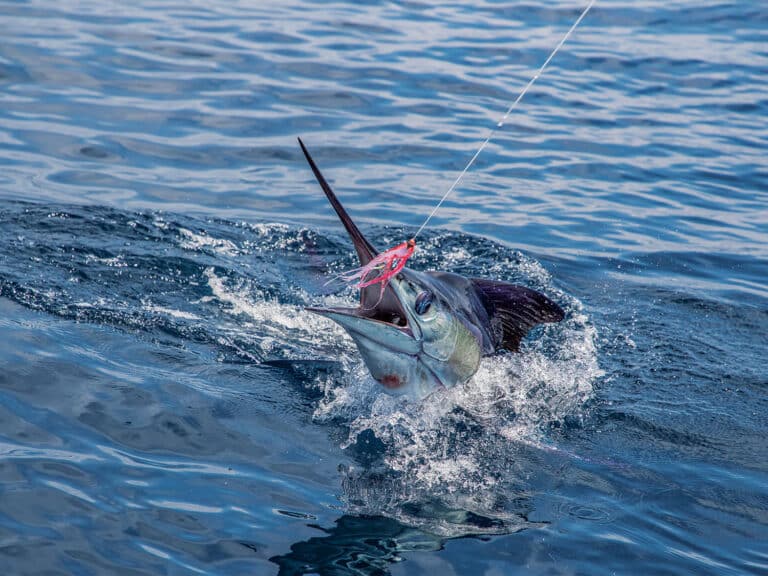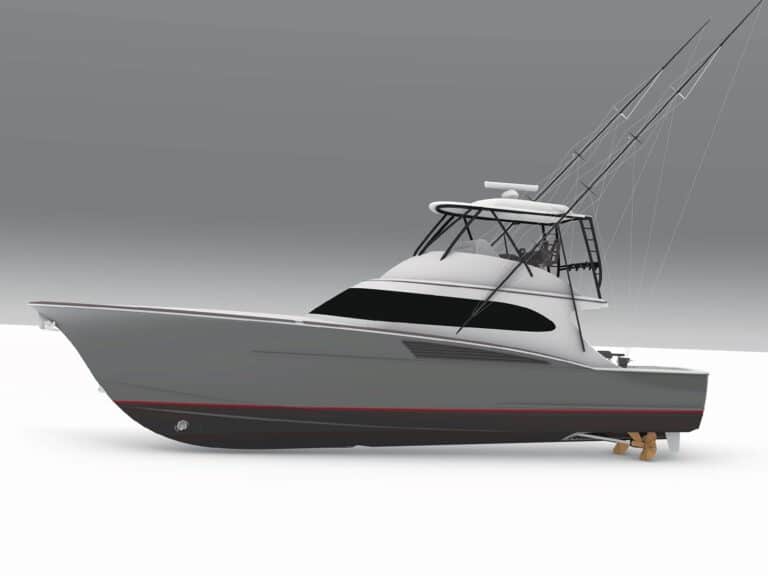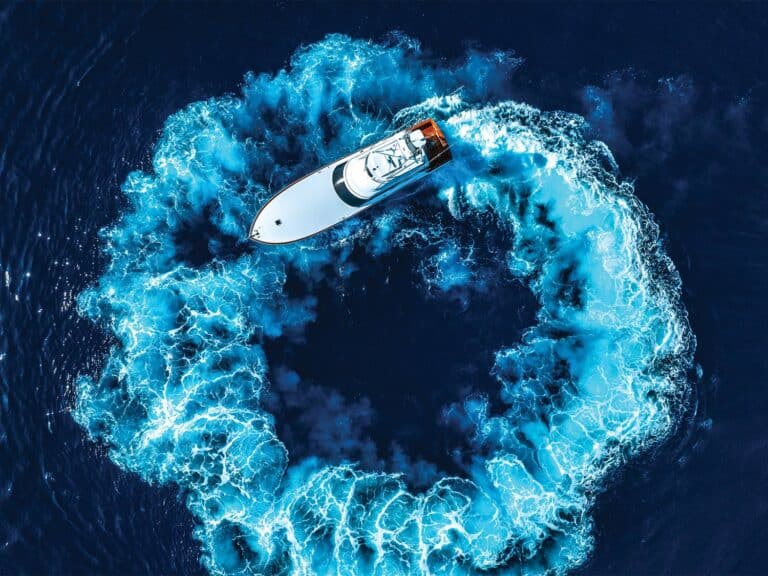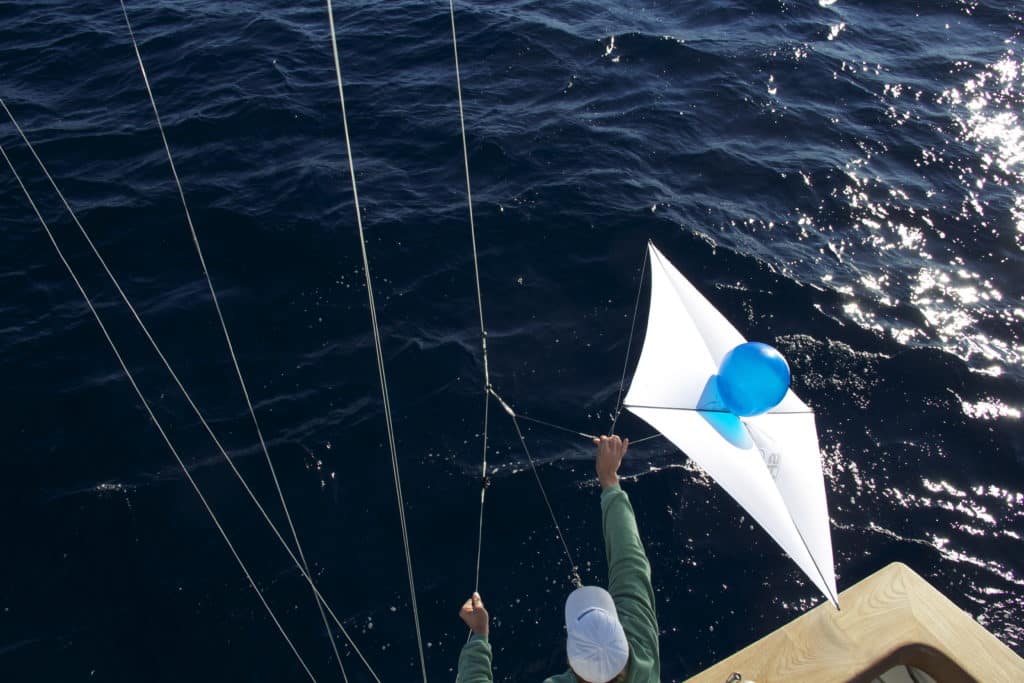
Everyone knows that fishing a frantically kicking live bait under a kite is a surefire way to target — and catch — a whole lot of sailfish. A lot of small center console boats that measure fewer than 30 feet use kites to spread out their live baits and cover a wider area, flying two kites with three or more lines under each kite. Larger boats can do this too; however, a big sport-fisher blocks a lot more wind than any center console, so there are certain tricks that you can use to make the job of flying and fishing kites from big convertibles a bit easier. Recently, while kite fishing with Capt. George Sawley on Stalker I noticed a few tricks that I thought I would pass on.
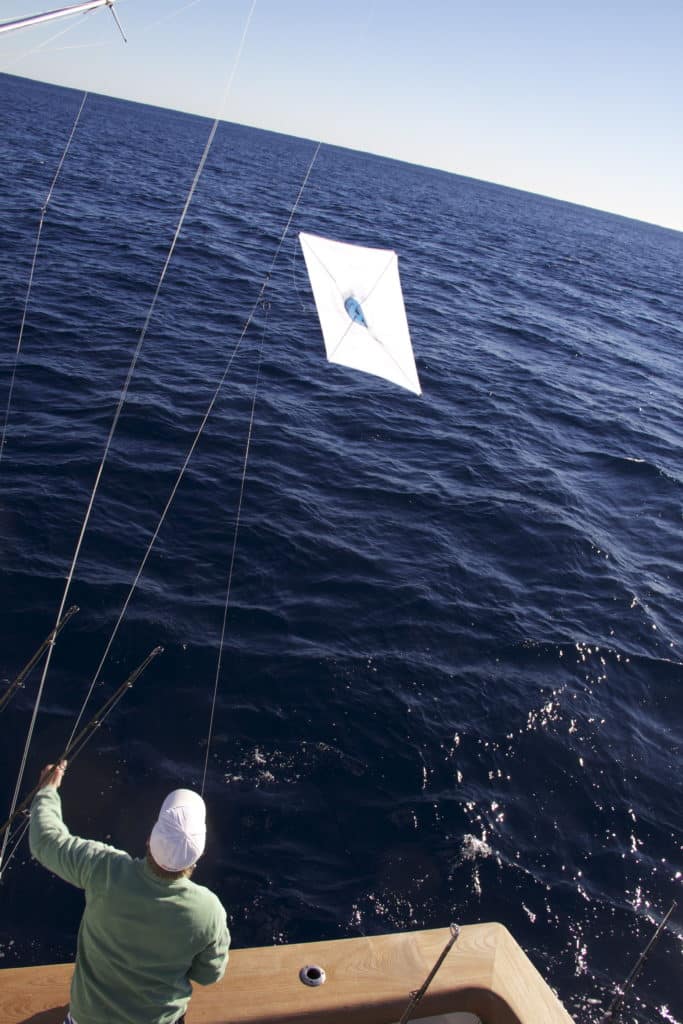
When launching a kite from a convertible, you normally have the mate stand in the corner of the cockpit with the kite rod raised high to get the kite out of the turbulent air that is disrupted by the boat.
On Stalker, they connect a 2-inch stainless steel ring to the outrigger that’s big enough to let the release clips on the kite line pass through. After passing the kite line through the ring and connecting it to the kite, they keep the kite pulled up close to the ring during the launch. The mate simply raises the rigger halyard and pulls the kite up and away from the boat in the undisturbed wind. At the same time, the clips are safely stuck between the ring and the kite rod, so the wind can’t blow them up the line where they can sometimes be unreachable.
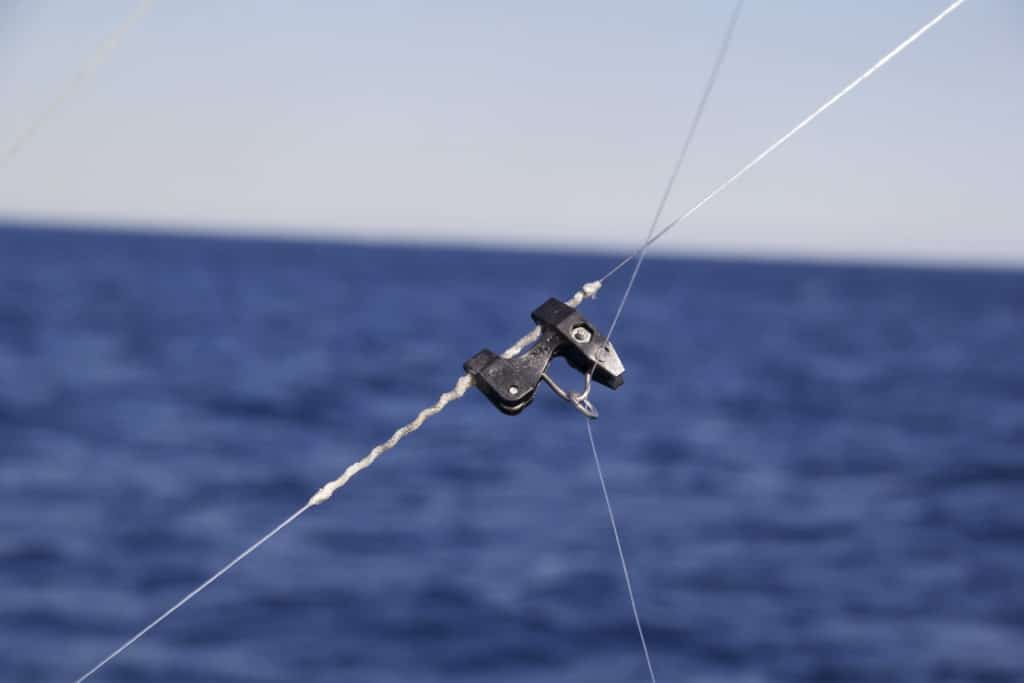
Most kite fishermen use swivels between braided line to separate the clips — usually about 75 feet apart. The clips have holes that are drilled out to accommodate certain size barrel swivels, and as the kite goes out, the swivel that is too big to pass through the hole hits the bottom of the clip and sends it up and out.
On Stalker, they use 50-pound monofilament for kite line and use a section of wax twine (attached in a series of half hitches to the mono) to catch and raise the clips instead of swivels. The section of half-hitched wax twine is about 3 inches long, so jamming the clip on the twine prevents the wind from blowing the clip up or having a feisty baitfish drag the clip out of position. If the bait can drag the clip, it can get away from a sailfish easier or even get wrapped up in the other baits.
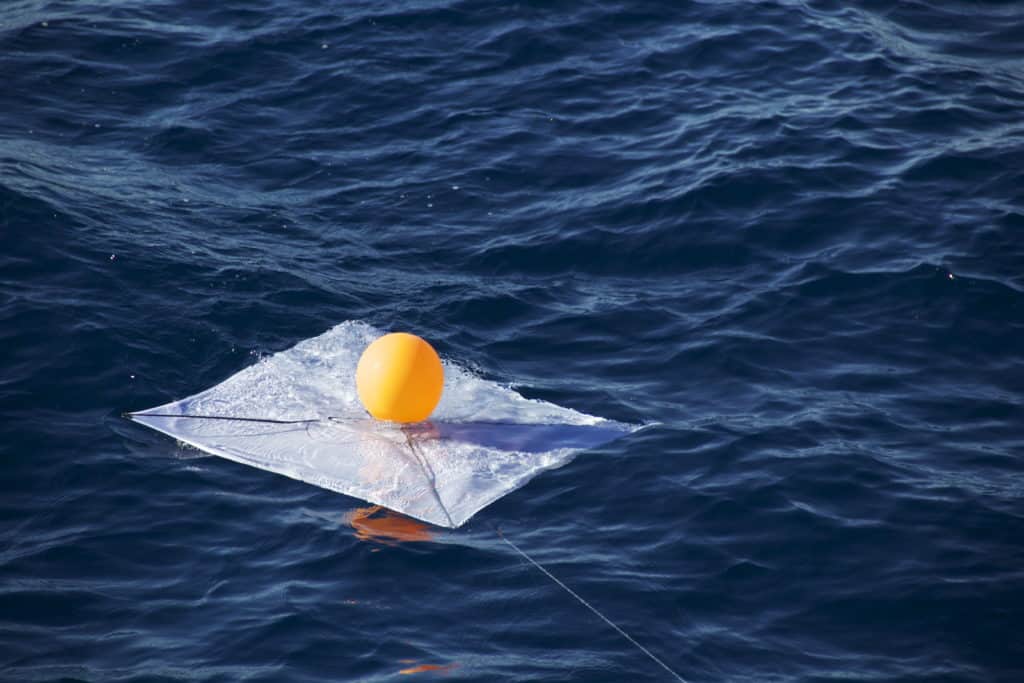
Also, everyone knows about adding a helium balloon to the kite on days with little wind to help keep them flying, but the boys on the Stalker tie a regular balloon, sans helium, to the back of every kite they fly, regardless of wind speed.
They tie on the balloon in case the wind dies, the kite line breaks or the boat is backing down on a fish and the kite hits the water. If the kite does go down, the balloon keeps the kite on the surface and makes it much easier to see.




